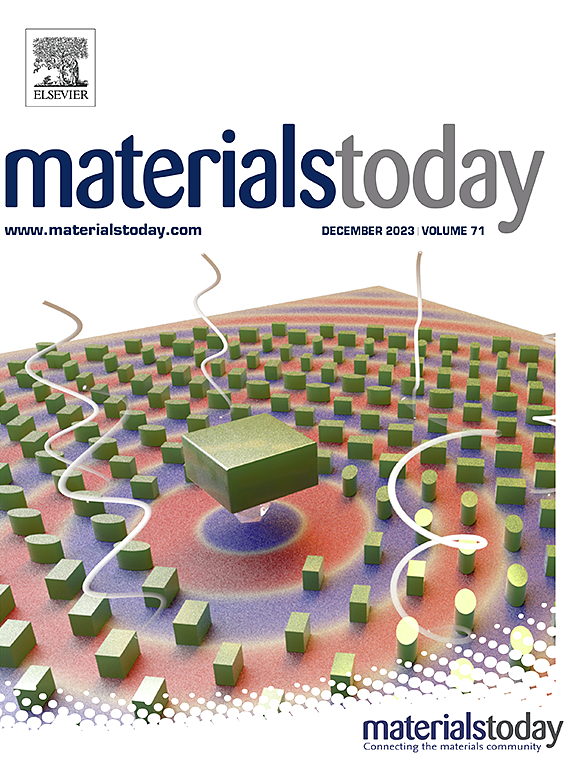Exceptional strength-ductility synergy in a casting multi-principal element alloy with a hierarchically heterogeneous structure
IF 21.1
1区 材料科学
Q1 MATERIALS SCIENCE, MULTIDISCIPLINARY
引用次数: 0
Abstract
Designing multiscale heterostructures by taking lessons from Nature provides a promising strategy for achieving excellent strength-ductility synergy in metals and alloys. The achievement of this goal usually requires intricate multi-step thermomechanical processing, but this is still a challenge with casting alloys rather than wrought ones. Here, we developed a Cr30Fe30Ni30Al5Ti5 (at.%) casting multi-principal element alloy (MPEA) which exhibits, in the as-cast condition, a hierarchically heterogeneous structure involving precipitates at multiple length scales. Microscale body-centered-cubic (BCC) grains are dispersed throughout a continuous face-centered-cubic (FCC) structural framework. Coherent L12 nanoparticles form in the FCC matrix, while abundant nanoparticles with hierarchical dimensions (i.e., of η, B2, and η/L21 phases) precipitate inside the BCC grains. The synergistic interactions between dislocations and multiscale precipitates which induce massive dislocation networks and stacking faults result in stable strain-hardening behavior, endowing the alloy with an exceptional combination of strength and ductility without the need for homogenization and complex processing. We believe that this represents a breakthrough that surpasses known casting MPEAs and offers implications for developing new high-performance casting alloys.

求助全文
约1分钟内获得全文
求助全文
来源期刊

Materials Today
工程技术-材料科学:综合
CiteScore
36.30
自引率
1.20%
发文量
237
审稿时长
23 days
期刊介绍:
Materials Today is the leading journal in the Materials Today family, focusing on the latest and most impactful work in the materials science community. With a reputation for excellence in news and reviews, the journal has now expanded its coverage to include original research and aims to be at the forefront of the field.
We welcome comprehensive articles, short communications, and review articles from established leaders in the rapidly evolving fields of materials science and related disciplines. We strive to provide authors with rigorous peer review, fast publication, and maximum exposure for their work. While we only accept the most significant manuscripts, our speedy evaluation process ensures that there are no unnecessary publication delays.
 求助内容:
求助内容: 应助结果提醒方式:
应助结果提醒方式:


